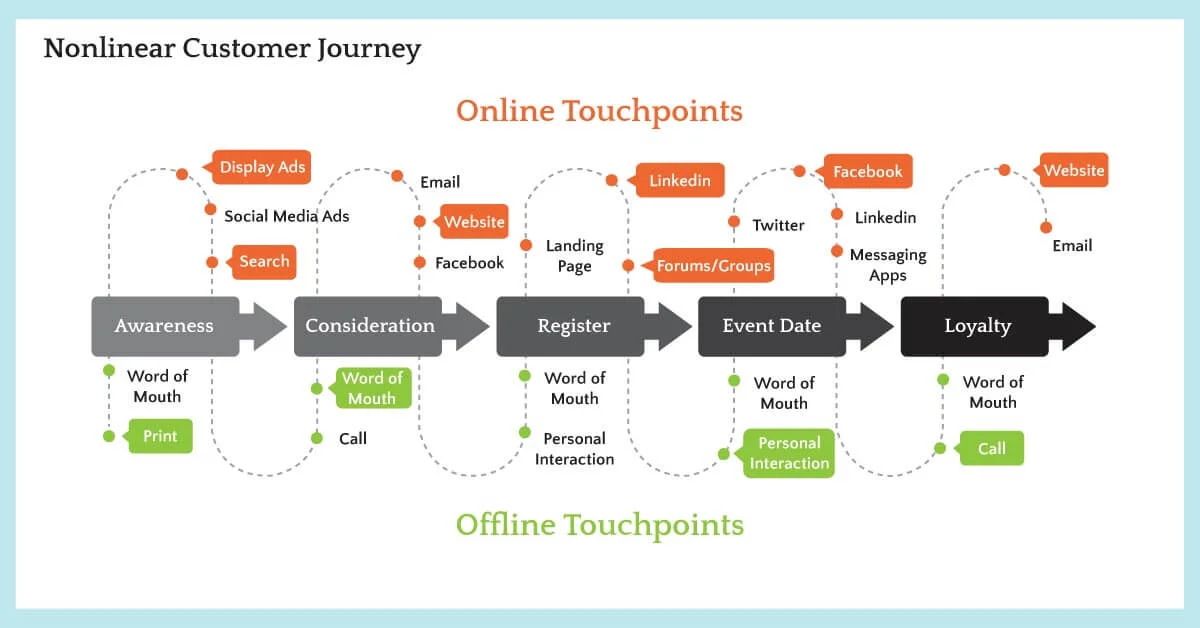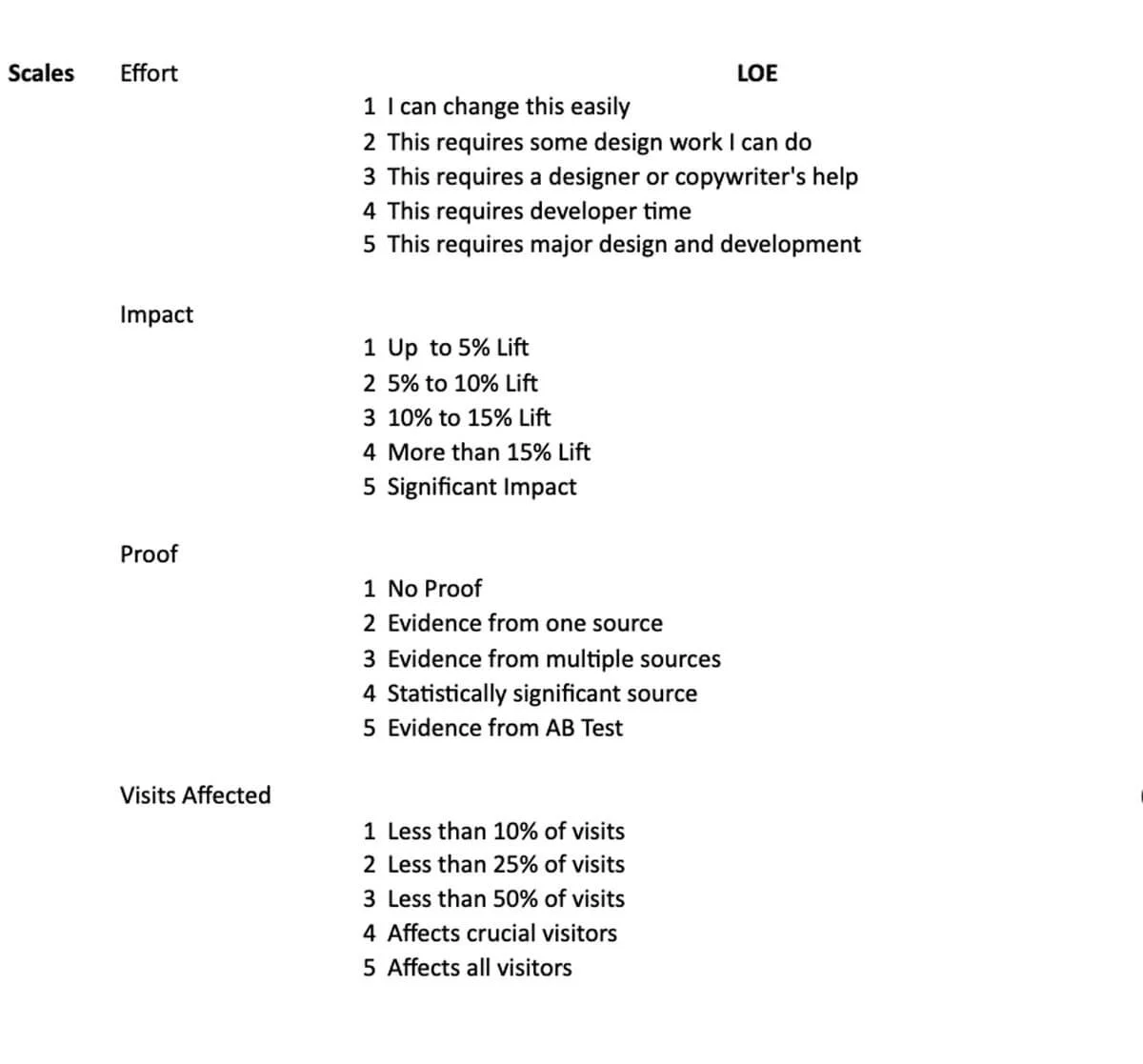A Must-Know Conversion Rate Optimization Checklist
Author & Editor
Content Team Lead
Published on: Sep 27, 2023 Updated on: Sep 2, 2024

Table of Contents
Old digital marketing strategies won’t cut it in 2022 to increase conversion rates and widen the gap between you and your competitors.
To-that-end and for working closer towards truly understanding your online audiences, you will need a conversion optimization checklist to guide your strategies.
But talking about conversion rate optimization (CRO) and achieving those goals is much easier compared to getting it done. Even for the most seasoned CRO expert, understanding the online audience thoroughly can be quite the elusive chase. This leads to beginners in the craft doubting if they even have a chance to build towards that on their own.
To that, we answer: Yes, you definitely can. Apart from lengthy readings and modeling after conversion rate optimization experts, one way you can do it is simply arming yourself with a trusty conversion optimization checklist. That, we provide in the content below; a conversion optimization process checklist developed and refined by a digital marketing agency in the Philippines specializing in the craft.
Study it well and apply it step-by-step so you can see more growth in your online conversions.
What is Conversion Rate Optimization (CRO)?
“Conversion optimization” sounds straightforward enough. Isn’t it essentially just increasing conversions for businesses? And yes, the elite conversion optimizers at CXL will agree with that.
In fact, the exact definition of conversion optimization on their website says:
Conversion optimization – when done right – is a systematic way to convert browsers into action takers (leads, buyers). It’s about making more money and growing the business without investing additional resources into acquisition.
Peep Laja, Conversion Optimization Expert and Founder of CXL
However, if you look into what drives those “browsers” to convert into “action takers”, as Peep describes, you’ll realize that it goes beyond that. Ultimately, to be able to convert someone from becoming a casual viewer to actually taking relevant action is an understanding of what makes them tick and compels them to act.
That said, you can also define CRO in this way:
Conversion optimization is a process of marketing to audiences that aims to:
- understand the behavior and motivations of your online audiences, and then;
- market to them in a way that resonates with those motivations – driving your audiences to take action.
Sounds complex, we know. But let’s take that definition and add further context by now tackling what conversion optimization isn’t.
What conversion optimization isn’t
On the other hand, you’ll have to note that conversion optimation isn’t a templatable practice.
So while we are providing you with a checklist, the extent and scope of its application will have to be tailored to fit your audiences’ and business’ current needs. Because one-size-fits-all strategies are not something you can expect in conversion optimization and digital marketing, in general.
Remember that the only constant thing is change and alongside the shifts in online trends, will come evolving audience needs and desires. And it’s important that your CRO strategies and processes remain systematic, adaptable, and scalable so that they remain effective.
The 4-point Conversion Rate Optimization Checklist
Below are the main milestones you should accomplish to conduct some basic conversion optimizations for your websites. Along with descriptions, you’ll find high-level processes that you should conduct, should you wish to bolster your conversion optimization efforts:
1. Conduct a thorough research
You’ll hear us say again and again that you will need to be a data-driven digital marketer so you can guarantee the efficiency of your online efforts. This especially applies when seeking to increase conversions with CO.
So you shouldn’t be surprised if the first step we advise you to take in optimizing for conversions is research. Conducting a thorough investigation into the various factors affecting your business is one of the fundamental elements of conversion optimization.
This is where your audits come into play. And being as thorough as possible will be critical to developing a conversion optimization strategy that’s guaranteed to work.
To make sure that you’re not overlooking anything, here are the key areas you’ll need to inspect:
a.) Internal audits
These are audits done on your own infrastructure, strategies, executions, or other dimensions of your digital marketing framework that’s relevant to your conversion optimization goals. And then, accordingly, review your performance with respect to your targets.
This assessment will allow you to identify loopholes you will need to fill in during the optimization. Here, you’ll have to perform the hard job of becoming your own devil’s advocate and ask yourself hard questions, like:
- What executions aren’t working for us that we can improve, or even scrap totally?
- Are we establishing realistic benchmarks for the efforts we deploy?
- Did we accurately gather, interpret, and respond to what the data told us?
b.) Customer research
This is a fundamental skill for any marketer – beginner or seasoned practitioner. As marketers, you are expected to make customer research a habit. And it’s done mainly to gain insight on how you can nudge them closer to converting – be it from audience to customer, or customer to a brand advocate.
But since this is a regular routine, the best question you should be asking right now is: How can you conduct better customer research?
There are a ton of methods for market research you can use for this, and whichever you choose to go with will depend once again on how it makes sense for your business and customers.
For instance, here in the Philipines where we still outrank the rest of the world in terms of social media usage, market research is best done through those platforms. To get the best feel of the market in the Philippines, you can explore techniques such as social monitoring or social listening.
Finally, one thing to add to your customer research arsenal is the ability to do a conversion funnel review which you can achieve with the help of analytics and other digital marketing tools.
A conversion funnel review is a look specifically into the customer journey – the steps they take online and offline prior to taking actions relevant to the goals you establish.

Understanding your unique customer journey will allow you to communicate to your audiences more effectively, in the context of forwarding your conversion optimization prospects.
c. Competitor audit
Following your customer research is a look into your competitors’ strategies and executions.
A thorough inspection into how they’re marketing to their unique audiences and the audiences you share will help you form an opinion on:
- What you can improve upon in terms of your own strategies and executions, and;
- How you can differentiate yourself from them in terms of business, communications, or others.
With those in mind, you’ll have to be careful and mind what you’re dismissing based on your own biases, versus what you’re acknowledging. Keeping your head level, and your views objective and impartial will help you craft logical strategies to overtake them.
2. Formulate a data-backed hypothesis
By the time you’ve wrapped up your research, you should already have the information you need to develop an educated guess at what you’re doing right versus what you’re doing wrong. This educated guess, or your hypothesis, is a prediction that forms the basis of the solutions you’ll be proposing, implementing, and testing.
In the CO process, a hypothesis consists of three parts:
a.) Problem
This is a clear statement that describes the exact nature of the problem you’re faced with. In digital marketing where customer touchpoints are endless, these problems can come in overwhelming quantities.
Faced with a handful of problems at a time, how do you determine which ones to prioritize? At Propelrr we do this by plotting it in a hypothesis prioritization framework you’ll see below.

b.) Proposed solution
After defining the problem, a proposed solution naturally follows. This proposed solution clearly describes the change you want to achieve and how you can work towards achieving it.
Let’s look back on the hypothesis prioritization framework above. In the first hypothesis regarding a problem with content, the proposed solution to declining SERP performance is “publishing regular and relevant content on [the] Propelrr blog.”
With your expertise and of the digital marketing landscape, it should be easy for you to formulate proposed solutions you can test and prove (or disprove) the effectiveness.
c.) Expected results
Expected results are the results your solution hopes to bring about. In the case of our previous example, the expected result is of course the phrase “will increase SERP performance.”
A complete and clear hypothesis statement will prove to be very helpful not just in identifying the actions you need to take, but also in how you can prioritize with respect to the needs of your business. More importantly, it also directs how you are going to assess the effectiveness of the solutions you put in place.
You can learn how the prioritization goes in the images below.


3. Build your strategies and solutions
After identifying the issues you need to address in order to optimize for boosted conversions, it’s now time to build your strategies and solutions.
We would like to reiterate at this point that there’s no cookie-cutter strategy that exists for conversion optimization strategy. And if you do happen to be marketed one, then you’ll have to question if it’s really effective for your business and customers.
In that regard, instead of giving you a step-by-step guide on optimization, here are some best practices we mix and combine as the situation necessitates.
a.) Optimizing your UX design
It’s not a little-known fact that an optimized UX design benefits conversion-driving efforts immensely.
In fact, it’s for this reason that, whenever there is a problem in conversions, it’s almost always the first aspect of your website you’ll look into. It’s also the reason why there is an entire conversion on conversion-centered design where specific principles should be followed.
These principles you should take note of and implement completely are:
- Create focus. Establish a focus on your page. Any design feature on your landing page should be dedicated to achieving a single campaign target.
- Build structure. Develop a natural flow for your landing page. Start by developing an informational hierarchy that lists down the elements that can help you achieve your CO goals in the most logical order.
- Stay consistent. Make sure that your website and webpages use the same fonts, color scheme, and types. Refrain from doing something out of the ordinary or experimenting with a new look to avoid alienating your website visitors.
- Demonstrate benefits. Choose a powerful hero shot. The hero shot is the first visual visitors see when they arrive on your website. It should be eye-catching, but it should also explicitly demonstrate the advantages your products or services offer.
- Draw attention. Draw visitors’ attention to the CTA — the most important part of your webpage — through interface features (colors, fonts, patterns, and shapes).
- Design for trust. Design with confidence. Establish your reputation by assembling social evidence that is not only compelling but also believable.
- Reduce friction. Check if your pages are performing well. Is your design crisp and simple? Are your landing pages mobile-friendly? How fast do your pages load?
Create websites that help lead you closer to your conversion goals. Learn about conversion-centered design techniques.
b.) Optimizing your product messaging
Product messaging is the “description, meaning, relevance, and value of a product or service.” And while it’s true that a good product will sell itself, weak product messaging can end up watering down how great it is.
Do justice to your products and services by refining your messaging on your website. Doing so will augment your frictionless user experience, and persuade your customers to convert. You can optimize your product messaging by making sure it appropriately fulfill the following criteria:
- Orient the user upon landing on your site. This goal ensures that your visitor is able to determine the relevance of your website within seconds just by looking at your header titles and copies on the search engine results pages (SERPs).
- Appeal to user motivation. The page content should vividly express copies that resonate with the user, as they scroll through the page. It should be clear what the website is offering to alleviate a pain point or achieve a desired outcome.
- Convert the unique value. Make sure your Unique Value Proposition (UNV) is translated comprehensively and effectively on your website. The UNV essentially answers the question, ”What makes your product or service stand out in the market?”
- Establish credibility. Establish credibility and build trust with visitors through customer testimonials, social proof, and trust badges.
- Address fears. Check if the website copies offer any guarantees or other reassurances to minimize perceived risks on the part of the visitor/buyer. Determine if the copies clearly address conversion-critical questions posed by visitors.
- Present the offer. There should be a visible and dominant feature on a page that elicits and persuades the visitor to make a purchase or do any other desired action. This boils down to how unified your CTA and your intentions are.
- Form design. Check whether a contact sheet or sales form is lacking or has a poor and irresponsive design. Sometimes, a conversion is lost when a visitor is ready to take action but the Contact Us page takes forever to load.
c.) Optimizing your other channels
Your brand customers don’t exist in a bubble in the digital space. It’s far from it, in fact.
With their numerous touchpoints online, optimizing your user experience and product messaging might not always be enough to win you those conversions. If that’s the case, you’ll have to look into optimizing your other online channels.
These channels in an all-around digital marketing framework can include but are not limited to social media, mobile apps, and email.
To optimize these channels to bolster your website conversions, can follow these quick tips when conducting communications campaigns:
- Put straightforward links. In social media posts, these will be in the captions or, in the body, if it’s an email. But regardless of where they are placed, make sure that they are straightforward and coherent with the information on the landing pages they redirect to.
- Landing pages should show pertinent information. This is the easiest landing page optimization technique you can implement, even before you launch it. Before a landing page is launched to your public, always check and double-check if the details are complete, relevant, and clear.
- Clear and compelling copy and call to action (CTA). There’s no sense in having a link and a landing page if you don’t have a CTA that directs users to click those links. Don’t overestimate the attention span of people skimming through thousands of online content. Be clear with what you want, and always communicate it through a compelling CTA.
4. Test and evaluate your efforts
Conversion optimization doesn’t end at simply sending out an optimized website to the online world. Once again, we emphasize that the true goal of your conversion optimization efforts is to understand the true identity of your audiences – current, or yet to be reached.
But to get closer to that true understanding we’re talking about, you will have to continually test and evaluate your efforts. Why? Because whether the efforts work to your greatest advantage or flop, those are both clues that help you develop that understanding.
If you insist on looking at it from a revenue-driven perspective, then the same argument still applies (if not assert fully its overarching nature). It is only through this rigorous testing and evaluation process that you will be able to identify which execution is more ideal for bringing in revenue while cutting your costs.
In testing and evaluating your efforts, you’ll have to: first, arm yourself with the right tools for conversion optimization, and; second, know exactly what clues to look for.
The clues we’re referring to in this context are the relevant conversion optimization metrics. With the handful of metrics you can look at on Google Analytics alone, keeping in mind these metrics will help you stay focused and zero in on the metrics that really matter in increasing conversions:
Key takeaways
Ensuring that you tick off the four elements of this checklist will get you started in a basic structure for making use of conversion optimization for your business. The structure this checklist provides, combined with these important takeaways, will help you sky-rocket your conversions as much as it did for the clients we’ve helped:
- Personalize the solution. Do so in such a way that best addresses the problems your customers are facing, and what your business capabilities can accommodate. You’re marketing for them and your business; it only makes sense that your solutions are resonant with them.
- Anchor your efforts to a proven framework. Conversion optimization is a complex practice. Making sense of things you can do right, where you’re getting it wrong, and all other aspects of its practice will be much easier if you have a framework that serves as the blueprint of your strategies.
- Keep your customers at the core. Your customers’ satisfaction with your brand and business is what influences your conversion optimization efforts, above all others. Whether it’s in the strategy or the infrastructural implementations, it will only be effective in converting audiences if it fulfills your customers’ needs impeccably.
Did this checklist help you flesh out a conversion optimization approach for your business or do you have your own list of must-haves for your CO?
Leave a comment, or reach out to the Propelrr team for more tips on how to boost your CO efforts.
